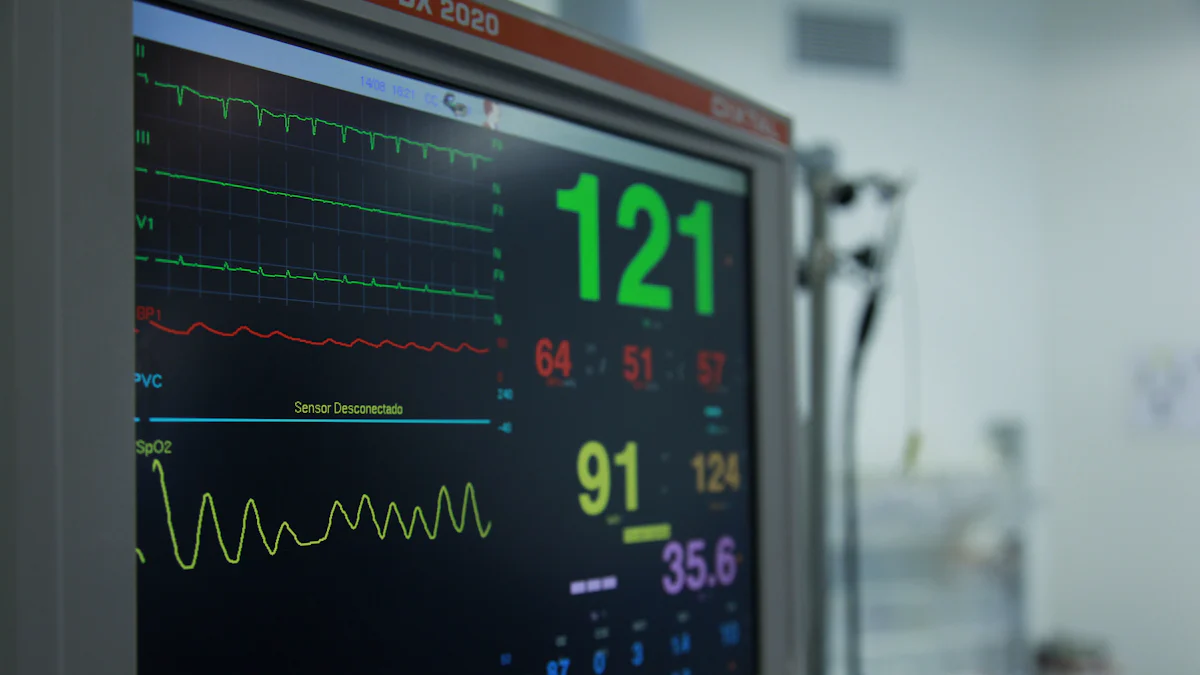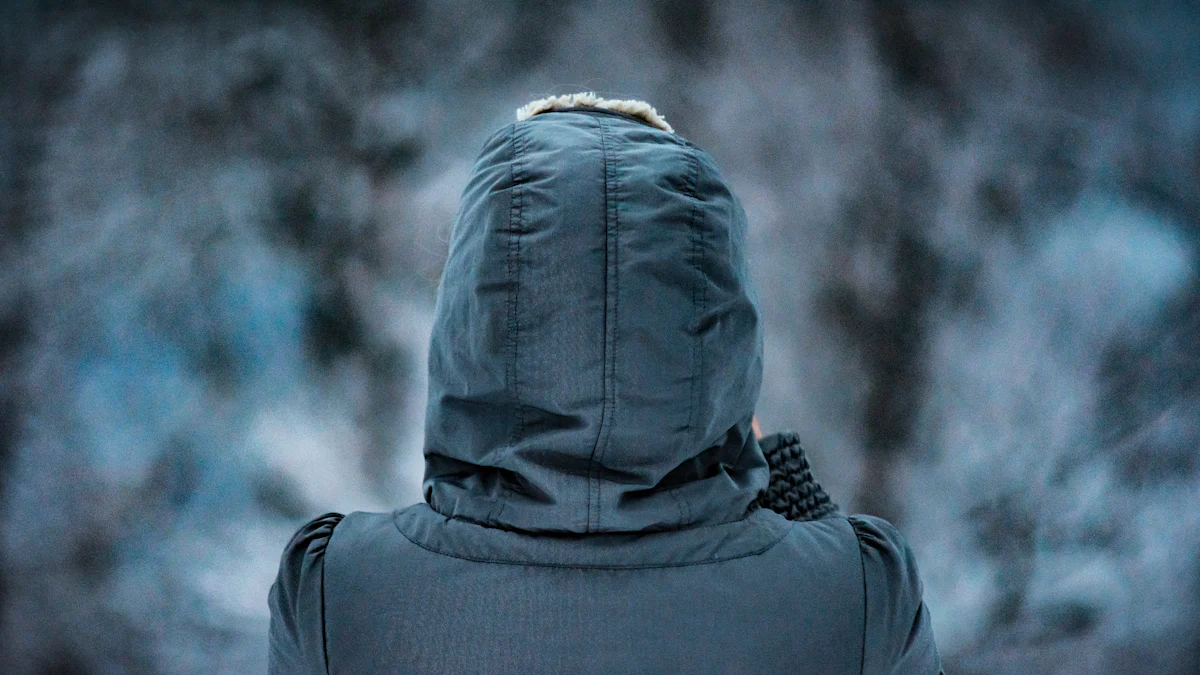
Does heated jacket affect pacemaker
Heated jackets have become a popular choice for staying warm in cold weather. However, if you have a pacemaker, you might wonder about the safety of using such technology. Understanding the interaction between heated jackets and pacemakers is crucial. Over 1 million people rely on pacemakers to manage heart conditions. Ensuring that these devices function without interference is vital. This blog post aims to provide you with valuable insights into how heated jackets may affect pacemakers, helping you make informed decisions about their use.
Understanding Pacemakers

What is a Pacemaker?
A pacemaker is a small electronic device that plays a crucial role in managing heart conditions. It helps maintain or restore a normal heartbeat by sending electrical impulses to the heart.
Function and Purpose
Pacemakers serve as life-saving devices for individuals with irregular heart rhythms. They ensure that your heart beats at a regular pace, preventing complications such as fainting or heart failure. By delivering electrical impulses, pacemakers help your heart maintain a steady rhythm, enhancing your overall quality of life.
Types of Pacemakers
There are three main types of pacemakers:
- Single-chamber pacemakers: These devices stimulate one chamber of the heart, either the atrium or the ventricle.
- Dual-chamber pacemakers: These stimulate both the atrium and the ventricle, coordinating their contractions for a more natural heartbeat.
- Biventricular pacemakers: Also known as cardiac resynchronization therapy (CRT) devices, these stimulate both ventricles to improve the heart's efficiency, particularly in patients with heart failure.
How Pacemakers Work
Understanding how pacemakers function can help you appreciate their importance in managing heart conditions.
Electrical Impulses
Pacemakers generate electrical impulses that prompt the heart to beat. These impulses mimic the heart's natural signals, ensuring that it contracts at the right time. The device continuously monitors your heart's activity and sends impulses when it detects an irregularity.
Monitoring Heart Rhythms
Pacemakers constantly track your heart's rhythm. They detect any abnormalities and respond by adjusting the heart rate as needed. This monitoring ensures that your heart maintains a stable rhythm, reducing the risk of complications associated with irregular heartbeats.
By understanding the function and operation of pacemakers, you can better appreciate their role in managing heart conditions and ensuring a healthier life.
Overview of Heated Jackets

Heated jackets have revolutionized how you stay warm in cold weather. These jackets use advanced heating technology to provide a cozy experience, even in the harshest conditions. Understanding their design and benefits can help you make an informed choice.
What are Heated Jackets?
Heated jackets are a type of clothing that generates heat through electricity. They are powered by rechargeable batteries, ensuring you stay warm for extended periods.
Design and Functionality
The design of heated jackets focuses on user comfort and efficiency. They incorporate high-quality materials like premium carbon fabric or graphene heating elements. These elements distribute heat evenly across the jacket, providing consistent warmth. Most heated jackets feature secure battery packs, which power the heating elements. You can adjust the temperature with an integrated LED controller, offering three settings: high, medium, and low. This flexibility allows you to select the perfect temperature for your environment.
Types of Heating Elements
Heated jackets use different types of heating elements to generate warmth. The most common are carbon fiber and graphene. Carbon fiber elements are known for their durability and efficient heat distribution. Graphene elements, on the other hand, offer lightweight and flexible heating solutions. Both types ensure that you remain comfortable, regardless of the weather conditions.
Benefits of Heated Jackets
Heated jackets offer numerous advantages, making them a popular choice for those who need to stay warm in cold climates.
Warmth and Comfort
One of the primary benefits of heated jackets is the warmth they provide. These jackets can keep you warm for 4 to 10 hours per charge, depending on the heat level you choose. This extended warmth ensures that you remain comfortable during outdoor activities or in extreme cold weather. The ability to adjust the temperature adds to the comfort, allowing you to tailor the heat to your needs.
Versatility in Cold Weather
Heated jackets are versatile, making them suitable for various cold-weather activities. Whether you're working on a job site or enjoying a winter hike, these jackets offer the warmth you need. Constructed from heavy-duty materials, they withstand harsh conditions while maintaining a stylish appearance. This versatility ensures that you can wear them both for work and leisure.
By understanding the design and benefits of heated jackets, you can appreciate their role in enhancing your comfort and mobility in cold weather. These jackets not only provide warmth but also offer a practical solution for staying active in chilly environments.
Interaction Between Heated Jackets and Pacemakers
Potential Interference
Electromagnetic Fields
Heated jackets generate electromagnetic fields (EMFs) due to their electrical components. You might worry about these fields affecting your pacemaker. However, most modern pacemakers have shielding that protects against small EMFs. A study published in Heart Rhythm in 2015 found that heated vests, similar to heated jackets, do not interfere with pacemaker function. This suggests that the EMFs produced by heated jackets are generally not strong enough to disrupt pacemaker operations.
Proximity Concerns
The proximity of the heating elements to your pacemaker can raise concerns. Keeping a safe distance between the jacket's battery pack and your pacemaker is advisable. Manufacturers often recommend maintaining a gap of at least six inches. This precaution helps ensure that any potential interference remains minimal. By being mindful of how you wear your heated jacket, you can enjoy its benefits without compromising your pacemaker's performance.
Safety Guidelines
Manufacturer Recommendations
Manufacturers of heated jackets provide specific guidelines for safe use. You should always read and follow these instructions carefully. They often include advice on battery placement and usage duration. By adhering to these recommendations, you can minimize any risk of interference with your pacemaker. Additionally, checking for any updates or changes in guidelines can help you stay informed about the safest practices.
Medical Advice
Consulting with your healthcare provider is crucial before using a heated jacket. Your doctor can offer personalized advice based on your specific health needs and pacemaker type. They may suggest monitoring your heart rhythm while using the jacket to detect any unusual activity. Regular check-ups can also ensure that your pacemaker functions optimally. By seeking medical advice, you can make informed decisions about using heated jackets safely.
Assessing Risks and Benefits
Potential Risks
Interference with Device Function
Heated jackets, while convenient, may pose risks to pacemaker users. The electromagnetic fields (EMFs) generated by these jackets could potentially interfere with your pacemaker's function. Although most modern pacemakers have shielding against small EMFs, it's crucial to remain cautious. A study on heated vests, which are similar to heated jackets, highlighted the importance of consulting with a physician before use. This precaution ensures that your pacemaker continues to operate effectively without any disruptions.
Health Implications
Using a heated jacket without proper guidance might lead to health complications. If your pacemaker experiences interference, it could result in irregular heart rhythms or other cardiac issues. You should be aware of any unusual symptoms while wearing a heated jacket. These might include dizziness, palpitations, or shortness of breath. Monitoring your health and seeking medical advice can help you avoid potential complications.
Benefits of Using Heated Jackets
Improved Quality of Life
Despite the risks, heated jackets offer significant benefits, especially for those living in cold climates. They provide consistent warmth, which can enhance your comfort and overall quality of life. By maintaining a stable body temperature, you can engage in outdoor activities without discomfort. This warmth can also alleviate pain associated with certain medical conditions, offering a controlled way to manage discomfort.
Enhanced Mobility in Cold Conditions
Heated jackets can significantly improve your mobility during cold weather. They allow you to participate in activities that might otherwise be too uncomfortable due to the cold. Whether you're working outdoors or enjoying recreational activities, these jackets ensure you stay warm and active. Their versatility makes them an excellent choice for maintaining an active lifestyle, even in harsh winter conditions.
By weighing the potential risks and benefits, you can make informed decisions about using heated jackets. Consulting with healthcare professionals and following safety guidelines will help you enjoy the advantages of heated jackets while minimizing any risks to your pacemaker.
Recommendations for Pacemaker Users
Consulting Healthcare Providers
Importance of Medical Consultation
You should always consult your healthcare provider before using a heated jacket if you have a pacemaker. Medical professionals emphasize the importance of understanding how electromagnetic fields might interact with your device. They can assess your specific health needs and provide guidance tailored to your situation. This step ensures that you make informed decisions about your safety and well-being.
Healthcare Professionals: "Individuals with pacemakers should avoid using heated jackets because the electromagnetic fields generated by the heating elements may interfere with the proper functioning of their pacemakers. It is advisable to consult with a healthcare professional for specific guidance."
Personalized Advice
Your doctor can offer personalized advice based on your pacemaker type and health condition. They might suggest monitoring your heart rhythm while using the jacket to detect any unusual activity. Regular check-ups can also ensure that your pacemaker functions optimally. By seeking medical advice, you can make informed decisions about using heated jackets safely.
Safe Usage Practices
Following Manufacturer Instructions
Adhering to the manufacturer's instructions is crucial when using a heated jacket. These guidelines often include advice on battery placement and usage duration. By following these instructions, you minimize any risk of interference with your pacemaker. Checking for updates or changes in guidelines can help you stay informed about the safest practices.
Monitoring for Symptoms
While wearing a heated jacket, you should remain vigilant for any unusual symptoms. These might include dizziness, palpitations, or shortness of breath. Monitoring your health and seeking medical advice can help you avoid potential complications. If you experience any of these symptoms, contact your healthcare provider immediately. This proactive approach ensures that you can enjoy the benefits of heated jackets without compromising your health.
In this blog, you explored the interaction between heated jackets and pacemakers. You learned about the potential risks and benefits, emphasizing the importance of safety and informed decision-making. Always prioritize your health by consulting healthcare professionals before using heated jackets. They can provide personalized advice tailored to your specific needs. Remember to follow manufacturer guidelines and monitor for any unusual symptoms. By taking these precautions, you can enjoy the warmth and comfort of heated jackets while ensuring your pacemaker functions optimally.
